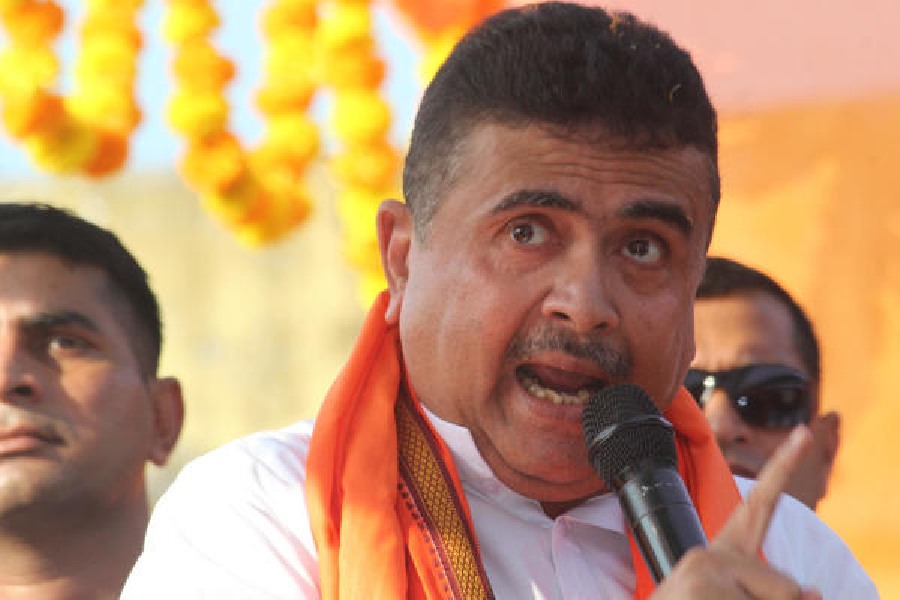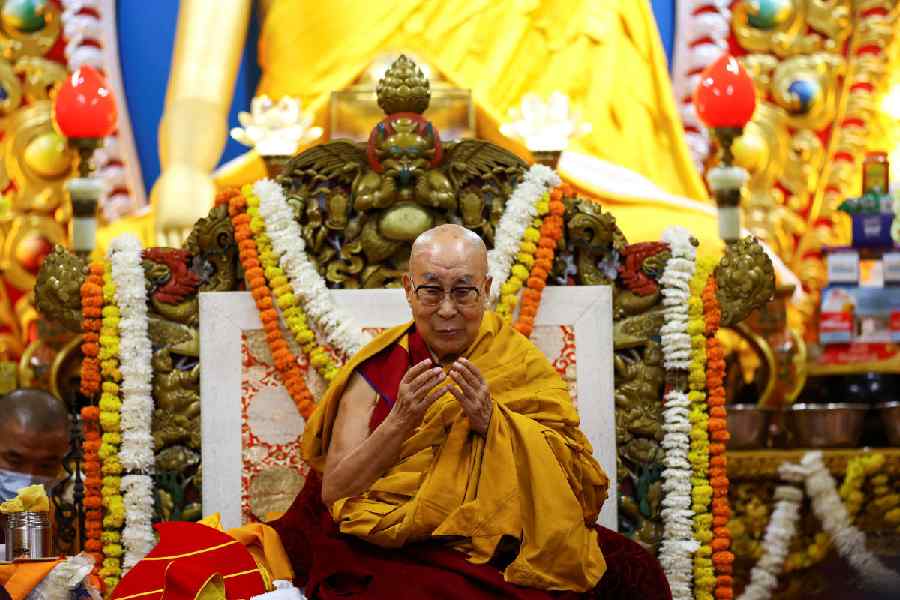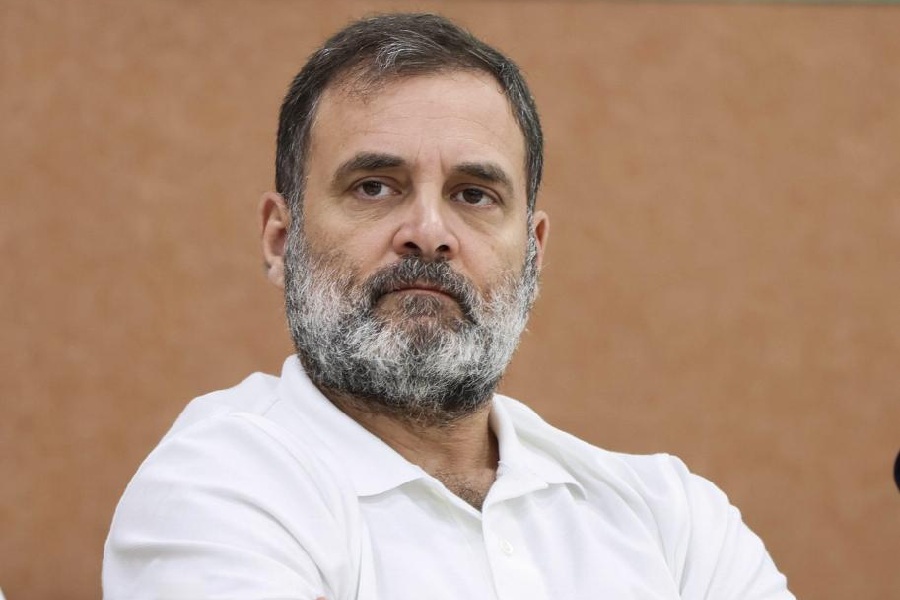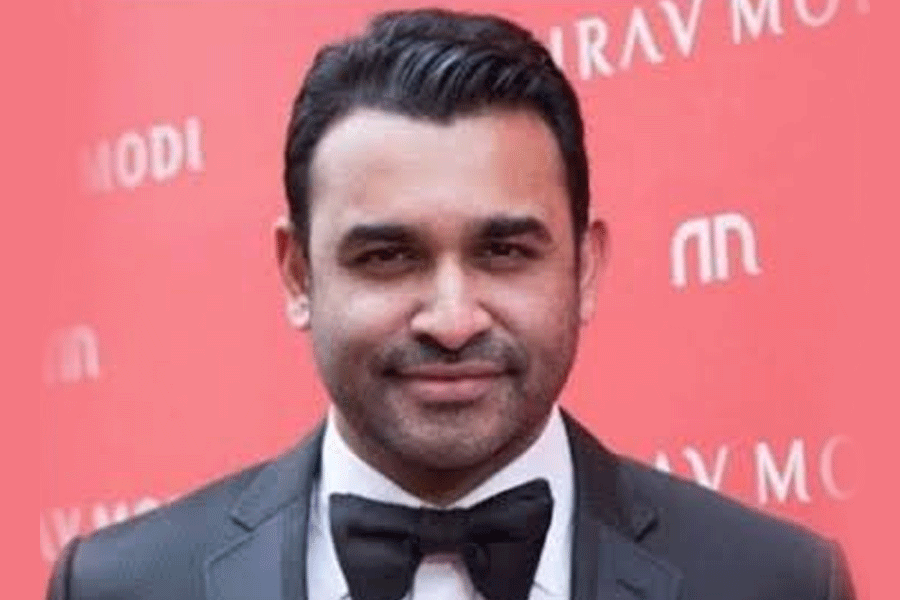
What worked
The scale and the presentation:
A Sanjay Leela Bhansali film means a sweeping, larger-than-life canvas and Padmaavat sticks to the SLB grammar. The sets are grand, the costumes opulent. You can’t tear your eyes off the screen and by cranking up everything that happens in the 164-minute runtime, Bhansali ensures the effect lingers on hours after you’ve walked out of the show.
Padmaavat can be accused of visual excess, but it all comes together beautifully. Every frame is evocative and a sensory delight, and we are thrilled that much of the credit for that goes to Calcutta boy Sudeep Chatterjee, the man behind the camera. The film is divided into two worlds — the happy, colourful Rajput life and the dark, dingy recesses of Alauddin Khilji’s fiefdom. And the contrast, needless to say, is startling.
Ranveer Singh: We know he’s the most uninhibited actor of his generation in Bollywood, and in Padmaavat Ranveer plays evil to perfection. Oversexed and reckless, Alauddin Khilji believes he has a right to everything in god’s kingdom and Ranveer almost makes him look like a bad-boy rockstar with his rawness and fierce physicality. He dances with abandon and kills without guilt, with a face always smeared with blood and mud. There is nothing to love about him, but he owns the film.

Deepika Padukone in Half Two: Though the film is named after her character, Deepika has precious little to do in the first half.
Queen Padmavati comes into her own post-interval, leading the Rajput charge against Alauddin and also plotting a daredevil escape for her husband Maharawal Ratan Singh (Shahid Kapoor) right under Alauddin’s nose. A statuesque Deepika, looking beautiful in every frame, portrays the spunky queen with a mix of strength and vulnerability. Her eyes are a mix of fire and tears, and no can smile through her tears as effectively as Deepika Padukone.
The battle scenes: From that spectacular scene where Alauddin Khilji gallops fearlessly into a blinding sandstorm to take on an armed enemy head-on to the arrows raining down in thousands from the fort on Alauddin’s army stationed below, Padmaavat — like Bajirao Mastani — scores with the scope and spectacle of its battle scenes. The one-on-one combat towards the end between Alauddin and Rawal Singh is filmed
Troy-style, with the latter’s quiet strength as much a treat to watch as the former’s brute power.
The supporting acts: Every supporting actor is perfectly cast and gives the film some of its strongest moments. While Aditi Rao Hydari is a luminous presence as Mehrunnisa (Alauddin’s wife), it’s Jim Sarbh (hijacker Khalil from Neerja), as Alauddin’s right-hand man Malik Kafur, who steals the spotlight. “Uski begum hi samajh lijiye,” says someone by way of Malik Kafur’s introduction and Sarbh plays the part with flamboyance. But apart from a scene where Malik dances around a tub in which Alauddin is bathing, Bhansali keeps Alauddin’s bisexual nature suggestive.

What didn’t
Shahid Kapoor: This fine actor gets a raw deal, saddled with the weakest of the three leads. Rawal Singh spends all his time either spouting paeans of Rajput valour or looking besotted into Padmavati’s eyes.
Shahid plays Rawal Singh with restraint and a consistent straight face that almost makes him feel like a cardboard cut-out. Despite the perfect bare torso, Rawal Singh is an insipid presence, especially in the scenes that he shares with Alauddin Khilji. He also isn’t much of an administrator, with Padmavati sniffing out Alauddin’s devious plans much before Rawal does.
The Deepika-Shahid chemistry: There is very little crackling between Shahid and Deepika, though they take up a lot of screen time staring into each other’s eyes. The romance is tepid and we never really feel for their love story as we felt for the similarly mounted, but far more sparkling, Jodhaa and Akbar romance in Jodhaa-Akbar. Only the brief Holi scene, where they smear gulal on each other suggestively, had the sparks flying between the two.
The 3D: Though a novelty in Bollywood, 3D doesn’t quite work in Padmaavat, apart from some of the battle scenes. The characters often appear cartoonish in 3D and the CGI work on Deepika’s stomach in the Ghoomar song becomes even more unflatteringly vivid in 3D.
The lack of emotional heft: Though cinematically rich, the film doesn’t have the emotional power of Bhansali’s last period film, Bajirao Mastani. And the intense focus towards the end on Padmavati’s self-immolation act is disturbing.
Priyanka Roy
Our top moments

That first glimpse of Padmavati dressed in pristine white as she hunts deer in the jungles of her native kingdom of Singhal. Her doe eyes speak a thousand words as she trains them on her target and shoots an arrow. It accidentally pierces the chest of Maharawal Ratan Singh, the ruler of Mewar who is visiting the kingdom. That moment when the king, though hurt and almost dying, can’t take his eyes off Padmavati, is a beautiful scene that sets the tone for the rest of the film.
Alauddin Khilji’s deviant and debauched personality is established early, but the man most impactfully brings on the chills in the scene in which he murders his king Jalaluddin Khilji (Raza Murad), who also happens to be his uncle and father-in-law, while his trusted slave Malik Kafur mechanically slits the throats of the king’s closest aides. It’s a scene that you want to look away from and yet your eyes will remain glued to the screen. How does Alauddin celebrate his ascension to the throne? By flaunting Jalaluddin’s decapitated head on a staff in front of his wife Mehrunnisa, who happens to be the slain king’s daughter.
The first time when Alauddin and Rawal Singh come face-to-face scores, with Bhansali keeping it tense yet making us giggle through Alauddin’s eccentric antics, especially when he comically keeps shifting the dinner plates suspecting his food has been poisoned.
Things get very dark very quickly when Alauddin, denied his demand of seeing Padmavati, checkmates Rawal Singh in a game of chess with the chilling words, “Ab raja khatre mein hain”. A few scenes later, Alauddin uses deceit and betrayal to capture Rawal Singh and Bhansali beautifully plays out that moment, the storm rising outside as Rawal Singh is led away to Delhi mirroring the storm within Padmavati.
Padmavati escaping with Rawal Singh, even as an injured Alauddin is unable to even raise a finger, is one of the film’s best moments. The two escape, and then a spectacular scene plays out — the Rajput soldiers, smuggled in as female slaves, taking on the might of the Khilji army on their home turf.
That powerful moment at the end when Alauddin and his army breach the fort but are ambushed by the feisty Rajput women with bagfuls of burning coals — it is Bhansali’s unmistakable nod to the iconic climax of Ketan Mehta’s Mirch Masala, in which the women gang up to take on their oppressor with bagfuls of red chilli powder.











